Makkah And Madinah
Discover Locations
Makkah, is serving as the spiritual heart for over 1.8 billion Muslims around the world. It’s history is intertwined with the very foundations of Islam. The Kaaba is the focal point of the Hajj pilgrimage, one of the Five Pillars of Islam, which every Muslim is required to undertake at least once in their lifetime if they are able.
The Kaaba and Masjid al-Haram
At the center of Makkah lies Masjid al-Haram, the largest mosque in the world, which surrounds the Kaaba. The Kaaba is covered in a black silk cloth, known as the Kiswah, and is the direction (Qibla) towards which Muslims around the world turn when they pray. Masjid al-Haram is not just a mosque but a spiritual sanctuary that hosts millions of pilgrims each year during Hajj and Umrah, providing a place of worship, reflection, and unity for Muslims from all corners of the earth
Cultural and Spiritual Hub
Beyond its religious significance, Makkah is a vibrant city with a rich cultural heritage. Its bustling markets, historic sites, and contemporary developments reflect a unique blend of ancient traditions and modern life. The city serves as a gathering place for Muslims from diverse backgrounds, fostering a deep sense of community and shared faith.
The Journey To Makkah
For Muslims, visiting Makkah is a deeply spiritual journey, offering an opportunity to connect with their faith on a profound level. Whether performing the Hajj pilgrimage, the lesser pilgrimage known as Umrah, or simply visiting to experience its sanctity, Makkah remains a place of unparalleled significance.
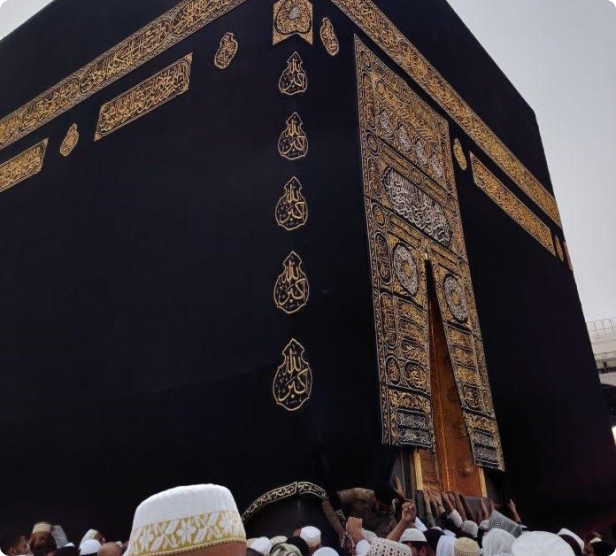
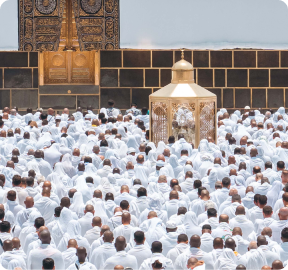
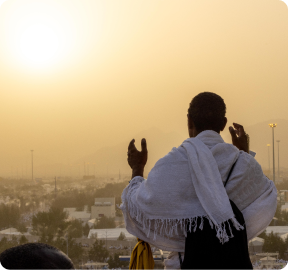
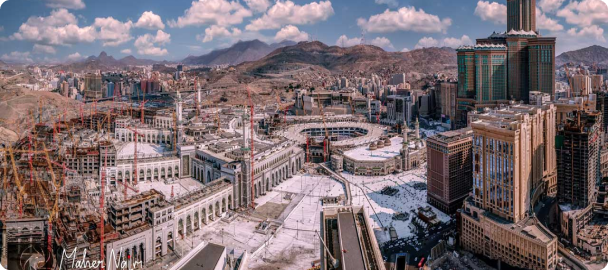
Sites To Explore

Jabal al-Nour (Mount of Light) and Cave of Hira
One of the most famous mountains in Makkah, located to the east of the Holy Mosque, this mountain includes the Cave of Hira, where the Prophet used to worship before the Prophethood. It is the place where the first verses of the Quran were revealed, with the words: 'Read in the name of your Lord who created' [Surah Al-Alaq: 1]. It is one of the high mountains in Makkah, with its peak resembling the hump of a camel. There is no mountain in Makkah that resembles Jabal al-Nour; it is unique in shape and appearance among the mountains.

Jabal Thawr - Thawr Mountain
One of the most famous mountains in Makkah, located to the south of the Grand Mosque, is Jabal Thawr. The Prophet Muhammad (peace be upon him) and his companion Abu Bakr al-Siddiq took refuge in the Cave of Thawr on Jabal Thawr for three nights during their migration to Madinah. The disbelievers of Quraysh followed their trail to the entrance of the cave but were unable to find them. In this context, Allah says: "If you do not aid him (the Prophet), Allah has already aided him when those who disbelieved drove him out as one of two when they were in the cave. When he said to his companion, 'Do not grieve; indeed Allah is with us.'" (Surah At-Tawbah: 40).

Al-Hudaybiya Site
It is located to the west of the Grand Mosque on the old road between Makkah and Jeddah. It is a well near the tree where the Prophet Muhammad (peace be upon him) pledged allegiance to the Muslims in the Pledge of Ridwan. The Treaty of Hudaybiyyah, known for its agreement between the Prophet and the disbelievers of Quraysh, was concluded there in the year 6 AH (627 CE). Allah revealed Surah Al-Fath (The Victory) after the Treaty of Hudaybiyyah. The virtue of those who attended the treaty is mentioned in the narration by Jabir ibn Abdullah (may Allah be pleased with him): "On the day of Hudaybiyyah, we were 1,400 in number. The Prophet Muhammad (peace be upon him) said to us, 'You are the best people on earth today.' Allah praised them in the Qur'an: 'Indeed, those who pledge allegiance to you, [O Muhammad], they are pledging allegiance to Allah. The hand of Allah is above their hands. So whoever breaks his pledge, only breaks it to the detriment of himself. And whoever fulfills what he has promised Allah - He will give him a great reward' (Surah Al-Fath: 10). Today, Hudaybiyyah is a prosperous town known as Ash-Shumaysi.

The Bay'ah Mosque in Mina
It is located at the base of Mount Thubayr overlooking the Jamrat areas in Mina, at the site of the Pledge of Aqabah, where the Ansar pledged allegiance to the Prophet Muhammad (peace be upon him) in the presence of his uncle, Abbas ibn Abdul Muttalib. This pledge led to the migration of the Prophet to Madinah. Caliph Abu Ja'far al-Mansur built a mosque at the site of the pledge in the year 144 AH / 761 CE. The mosque was renovated and maintained during the Saudi era, with the latest restoration being part of Prince Mohammed bin Salman's project to develop historical mosques.

Masjid al-Jinn - Mosque of the Jinn
It is one of the significant historical mosques in Makkah, located near the Sacred Mosque. It was built in the early 3rd century AH (9th century CE). It is named after the place where the Prophet Muhammad (peace be upon him) met the jinn at night, and where Surah Al-Jinn was revealed. Allah Almighty says: "Say, ‘It has been revealed to me that a group of jinn listened [to the Quran] and said, ‘Indeed, we have heard a wondrous recitation’" (Surah Al-Jinn, 72:1). It is also known as the Mosque of the Guard because it was the last point on the northeastern side of the Haram where the guards maintaining security in Makkah would meet and gather. It is also called the Mosque of the Pledge because the jinn pledged allegiance to the Prophet at this location. King Abdulaziz Al Saud took special care and interest in this mosque, and its construction has been recently renovated.

Masjid Al-Taneem - Masjid Aishah
Located west of Makkah, it is one of the places from which residents of Makkah and others enter into Ihram for Umrah. The place gained its fame because Aisha bint Abu Bakr (may Allah be pleased with her) entered into Ihram for Umrah from there, after the Farewell Pilgrimage. Therefore, it is named the Mosque of Aisha (may Allah be pleased with her). Aisha (may Allah be pleased with her) said: "O Messenger of Allah, your companions return with the reward of Hajj and Umrah, but I did not perform more than Hajj." He replied: "Go, and let Abdur Rahman accompany you." So, Abdur Rahman was instructed to perform Umrah with her from Tan'im, and the Messenger of Allah (peace be upon him) waited for her at the top of Makkah until she arrived. This site is one of the closest places for exiting Ihram from the Haram. The mosque was built in 240 AH (854 CE) and has been renovated many times, with the most recent renovation occurring during the reign of King Fahd bin Abdulaziz Al Saud.

Masjid al-Namirah - Al-Namirah Mosque
Namirah is the name of a small mountain located to the west of the mosque, to which it is attributed. Pilgrims pray the midday (Dhuhr) and afternoon (Asr) prayers combined and advanced at this site, following the example of the Prophet who moved from Mina to Arafat to stay in a tent at Namirah on the Day of Arafat, the 9th of Dhul-Hijjah. After the sun passed its zenith, he moved to the valley of Uranah where he delivered a sermon and prayed with the people. The Namirah Mosque has undergone several expansions throughout history, with the most recent being during the Saudi era to accommodate the increasing number of pilgrims, making it one of the largest mosques in the world.

Masjid al-Khayf - Al-Khayf Mosque
Located in the Mina area, near the small Jamarah, this mosque is named after the "Khayf of Banu Kinana." The Prophet Muhammad (peace be upon him) stayed at this location during the Farewell Pilgrimage. It is also referred to as the Mina Mosque due to its location within the Mina area. The mosque was expanded and renovated during the reign of King Fahd bin Abdulaziz Al Saud in 1407 AH (1987 CE) to accommodate the increasing number of pilgrims each year.

Jamaraat Bridge
Located in the Mina area, this bridge was built and developed during the Saudi era to facilitate the process of stoning the Jamarat for pilgrims and to accommodate the increasing number of pilgrims each year. It is situated at the location where Shaitan was said to have tried to tempt the Prophet Ibrahim (peace be upon him) when he intended to sacrifice his son Ismail. It has since become the designated area for pilgrims to perform the stoning ritual at the three Jamarat: the small Jamarah, the middle Jamarah, and the large Jamarah (Jamarat al-Aqabah). Stoning the Jamarat is one of the essential rites of Hajj, involving throwing seven pebbles at each Jamarah. According to a narration from Abdullah bin Omar (may Allah be pleased with him), he would throw seven pebbles at the lower Jamarah, making a Takbir (saying "Allahu Akbar") after each pebble, then move forward and stand facing the Qiblah (the direction of the Kaaba) to pray and raise his hands. He would then throw at the middle Jamarah in the same manner and pray similarly. Finally, he would throw pebbles at the Jamarah al-Aqabah from the valley floor without standing there, saying: "This is how I saw the Prophet Muhammad (peace be upon him) do it."

Al-Ji'rana
Located in the northeast of Makkah, it is home to a mosque built before the third century Hijri / ninth century AD. Pilgrims from Makkah perform Umrah from here. The Prophet Muhammad (peace be upon him) performed Umrah from this location after the Battle of Ta'if. He also stayed here after returning from the Battles of Hunayn and Autas in the eighth year of Hijra (630 AD), where he distributed the spoils of war. Anas ibn Malik (may Allah be pleased with him) was asked: "How many times did the Prophet (peace be upon him) perform Hajj?" He replied: "Once. And he performed Umrah four times: Umrah in Dhul-Qi'dah, Umrah at Hudaybiyyah, Umrah with his Hajj, and Umrah of Ji'ranah, where he distributed the spoils of Hunayn.

Tuwa Well
Located in the valley of Tuwa in Makkah, Al-Shafi'i said that the valley was named Dhi-Tuwa because of a well there that was covered with stones. It is mentioned that the well was dug by Abd Shams ibn Abd Manaf ibn Qusayy. His daughter, Sabi'a bint Abd Shams, boasted about this well in a poem. The Prophet Muhammad (peace be upon him) stayed by the well of Tuwa in the valley of Tuwa on the night of his arrival during the Umrah of Qada and the Farewell Pilgrimage. He also stopped there on the Day of Conquest to organize his army and direct them to enter Makkah. Abdullah ibn Omar ibn al-Khattab (may Allah be pleased with him) reported: "The Prophet (peace be upon him) would stay at Dhul-Tuwa and spend the night there until he performed the Fajr prayer when he arrived in Makkah. The Prophet's place of prayer was on a thick hill, not in the mosque that was built later, but below that on a rough, thick hill."

Asfan Well
Asfan: A historic and thriving town located 80 kilometers north of Makkah. It has ancient, fresh wells, including the Asfan well, situated in the center of Asfan. It is renowned for its fresh and abundant water, which is comparable to the well of Jaranah in its purity. The town is named Asfan because the valleys run through it. Asfan is 38 kilometers from the Red Sea coast and was a central stop for trade caravans before Islam. It later became a station for trade and pilgrimage caravans on the route between Madinah and Makkah. It is narrated that the Prophet Muhammad (peace be upon him) passed through the valleys of Asfan on his way from Madinah to Makkah in the year 8 AH / 630 CE. Abdullah ibn Abbas reported: "The Prophet (peace be upon him) left Madinah for Makkah, fasted until he reached Asfan, then called for water, raised it with his hands to show the people, and broke his fast until he reached Makkah, during Ramadan." (Reported by Bukhari). It is also narrated that the Prophet (peace be upon him) passed through the valleys of Asfan on his way to Makkah for the Farewell Pilgrimage.

Al'Usaylah Inscriptions and Wells
It is located in Wadi Al'Usaylah, northeast of Makkah, in the valley that was on the route of the Hajj caravans coming from the north. It is a fertile valley, historically known as the valley of Khalid ibn Asid. This site contains over sixty inscriptions from the 1st and 2nd Hijri centuries, which correspond to the 7th and 8th centuries CE. These inscriptions are carved into the rock in the mountains known as the Mountains of al-Wajrah. There are two remaining wells out of the original four.

Jabal ar-Rahmah - Mount Arafat
It is also called Jabal Arafat. At its summit, there is a modern marker built to serve as a landmark, standing four meters tall. It is located to the north of the plain of Arafat and outside the boundaries of the sacred area. It is a small mountain, no more than thirty meters high, and difficult to ascend; therefore, steps were constructed to reach the top, numbering more than 91 steps. Arafat as a whole is a place for standing (where pilgrims gather). According to Jabir ibn Abdullah, may Allah be pleased with him, the Prophet Muhammad (peace be upon him) said: "I have stood here, and all of Arafat is a place for standing."

Ain Zubaida
It is located in Wadi Na'man on the road between Taif and Makkah. It is named after Zubaida bint Ja'far, the wife of Caliph Harun al-Rashid, who ordered the delivery of water from the spring to Makkah in the year 174 AH (791 CE), after observing the hardships faced by pilgrims in fetching water from a place called Al-Uwajr at the base of Jabal Kura on the western side of the sacred area. The project took ten years, and the length of the channels extending to Makkah is 38 km. Subsequently, the Muslim caliphs, sultans, princes, and wealthy individuals took care of its renovation and construction. King Abdulaziz Al Saud ordered its restoration, and a special administration named Ain Zubaida was established to oversee and manage the spring and its associated wells, as well as their restoration.

Sabil Umm Al Joud (King Abdulaziz's Sabils)
It is located to the west of Makkah, east of the western boundary markers of the Haram, on the old Jeddah - Makkah road. It was established in 1361 AH (1942 CE). The water openings in this public fountain (Sabil) are among the most numerous in the charitable water fountains built by King Abdulaziz Al Saud. It is the only fountain constructed at the beginning of the road leading to Makkah, serving travelers whether they are coming from or going to Makkah.

Ain Hunayn
A fresh water spring located in the northeast of Makkah, in the Valley of Hunayn, where the Battle of Hunayn took place between the Muslims led by the Prophet Muhammad (peace be upon him) and the tribe of Hawazin and their allies in the eighth year of the Hijra / 630 CE. In it, Allah revealed: 'And [mention] the Day of Hunayn, when your great number pleased you, but it did not avail you at all' [Surah At-Tawbah, 9:25]. This spring was established by Zubaydah bint Ja'far, the wife of the Abbasid Caliph Harun al-Rashid, in the second century of the Hijra / seventh century CE, to provide water for pilgrims due to the scarcity of water in Makkah at that time. One of its notable features is the Hunayn aqueduct, which was built in a distinctive architectural style and flows into a pond on the opposite side of the valley.

Sites of the Prophet's Migration Route - Al-Juhfa
A large village located northwest of Makkah, named Al-Juhfa because the flood carried away its inhabitants. Al-Juhfa includes a mosque built by the Prophet Muhammad (peace be upon him) and serves as the miqat (ritual boundary) for people from Egypt, the Levant, and Maghreb who wish to perform Hajj or Umrah. Abdullah ibn Abbas (may Allah be pleased with him) reported: "The Prophet (peace be upon him) designated the miqat for the people of Madinah as Dhul-Hulaifa, for the people of the Levant as Al-Juhfa, for the people of Najd as Qarn al-Manazil, and for the people of Yemen as Yalamlam. These are the designated miqats for them and for those who come from outside these areas for Hajj or Umrah. For those who are closer, they can assume ihram (the sacred state) from where they start, even the people of Makkah from Makkah."

Sites of the Prophet's Migration Route - Khulays
A city located between Makkah and Madinah to the northeast of Makkah. It was once a fortress and village, situated in a valley with abundant water, crops, and date palms. It has a large pond visited by pilgrims on their way to Makkah. It was an important station on the migration and pilgrimage route and also features a spring with abundant water.

Sites of the Prophet's Migration Route - Al-Abwa'
A large valley in the Hijaz region, now known as (Al-Khuraybah), where the grave of Amina bint Wahb, the mother of the Prophet, is located. Al-Abwa' witnessed the first military campaign of the Prophet in the second year of Hijra (624 CE). It was one of the caravan routes in pre-Islamic times between Makkah and Madinah, and after the advent of Islam, it became one of the important routes used by pilgrims traveling between Makkah and Madinah.
Madinah is a city of profound historical and spiritual significance for Muslims worldwide. It is the city to which the Prophet Muhammad migrated in 622 CE, marking the beginning of the Islamic calendar. Known as the "City of the Prophet," Madinah is a place where the roots of Islam took hold and flourished.
Al-Masjid an-Nabawi
At the heart of Madinah lies Al-Masjid an-Nabawi, the Prophet's Mosque, one of the largest and most significant mosques in the world. The mosque was originally built by the Prophet Muhammad himself and has been expanded over the centuries to accommodate millions of visitors. Within its walls lies the Prophet’s tomb, which is a focal point of reverence for Muslims who visit the city. Visitors who visit Madinah often find solace in offering prayers at this sacred site, reflecting on the life and teachings of the Prophet.
The City of Peace and Reflection
Madinah is often referred to as a city of peace, tranquility, and reflection. Unlike Makkah, where the emphasis is on the ritual of pilgrimage, Madinah offers a quieter, more introspective experience. The city is a sanctuary where Muslims can deepen their spiritual connection, contemplate the legacy of the Prophet, and immerse themselves in the serene atmosphere that pervades the city.
Cultural and Spiritual Legacy
Madinah is not only a religious center but also a cultural hub. It has a rich heritage that includes historical sites, ancient mosques, and vibrant marketplaces. The city has played a crucial role in the development of Islamic scholarship and culture, and it continues to be a center of learning and religious
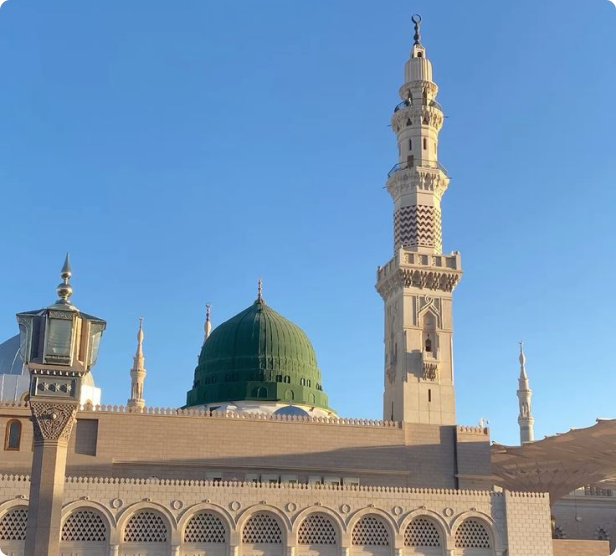
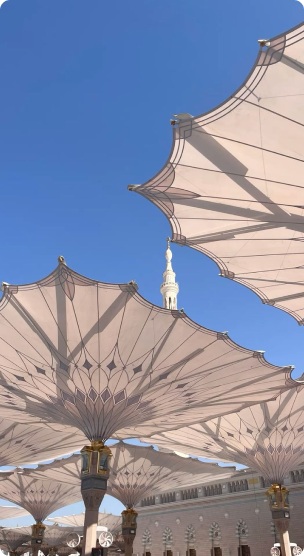
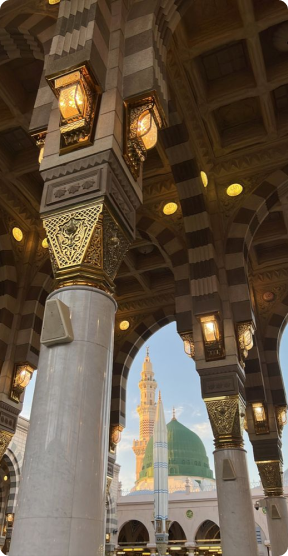
Sites To Explore

Masjid Quba - Quba Mosque
The first mosque built in Islam and the first mosque built in the city of Madinah. Allah Almighty revealed the following verse about it: (A mosque founded upon piety from the first day is more deserving that you stand therein. In it are men who love to purify themselves, and Allah loves those who purify themselves) [Surah At-Tawbah, 9:108]. It is one of the largest mosques in Madinah after the Prophet’s Mosque. It is located south of Madinah, and it was built by the Prophet Muhammad (peace be upon him) after his migration from Makkah to Madinah. The Prophet said regarding its virtue: 'Whoever performs ablution in his house and then goes to pray in Masjid Quba, he will receive the reward of an Umrah.' The Prophet was keen to visit Masjid Quba regularly, and it is established that he visited Masjid Quba every Saturday, either walking or riding. Muslims have maintained and expanded it throughout the ages, with the most significant expansion in its history occurring during the reign of King Salman bin Abdulaziz Al Saud. On April 8, 2022 (7 Ramadan 1443 AH), Crown Prince Mohammed bin Salman bin Abdulaziz Al Saud announced the launch of a project to expand and develop the surrounding area, aiming to increase its capacity to accommodate 66,000 worshippers and 50,000 square meters.

Badr
Located in the west of Madinah, it was a village belonging to the Banu Ghifar tribe. Later, a flowing spring emerged there, leading to the formation of a village around it. Badr was a significant season and gathering place for the Arabs during the pre-Islamic era, and it was situated on the trade and pilgrimage routes. The area of Badr witnessed the decisive battle between the Muslims and the Quraysh in the second year of the Hijra (624 CE), which ended with the victory of the Muslims. The Prophet Muhammad (peace be upon him) said about those who witnessed it: 'A man who witnessed Badr or Hudaybiyyah will not enter Hell.' This battle is also known as the Battle of Furqan. Allah Almighty says: 'And [remember] the Day when We shall raise up in every nation a witness against them from among themselves, and We shall bring you [O Muhammad] as a witness against these people. And We have not sent you [O Muhammad] except as a mercy to the worlds' [Surah Al-Anfal, 8:41].

Sayyid al-Shuhada in Uhud
Located to the north of the Prophet’s Mosque, this site is of significant historical importance in the life of the Prophet Muhammad (peace be upon him), as it is overseen by Mount Uhud. The Prophet Muhammad said about it: 'A mountain that loves us and we love it.' The Battle of Uhud took place here in the month of Shawwal in the third year of the Hijra (625 CE). The site contains the remains of more than seventy martyrs from the companions who fell in the battle, including Hamza ibn Abd al-Muttalib, known as 'The Lion of Allah' and 'The Master of the Martyrs,' and Musab ibn Umair. Allah Almighty revealed: 'And when a disaster struck you, although you had struck [the enemy] with one twice as great, you said, “From where is this?” Say, “It is from yourselves.” Indeed, Allah is over all things competent.' [Surah Al-Imran, 3:165].

The Trench
Located between the volcanic fields of Waqim and Al-Wabra, this site is where the Muslims dug the trench to defend Madinah when the Quraysh and their allied tribes advanced during the Battle of the Trench (also known as the Battle of the Confederates) in the fifth year of the Hijra (627 CE). A surah in the Quran is named Surah Al-Ahzab (The Confederates) in reference to this battle. The Prophet Muhammad (peace be upon him) used to pray: 'There is no deity but Allah alone, who has honored His soldiers, supported His servant, and defeated the confederates alone; there is nothing after Him.' Allah granted victory to the Muslims as mentioned in the Quran: 'O you who have believed, remember the favor of Allah upon you when armies came to you and We sent upon them a wind and armies you did not see. And ever is Allah, of what you do, Seeing.' [Surah Al-Ahzab, 33:9]. The confederates were returned defeated without a battle, and this miracle sufficed the believers. In the area, there is a modern mosque named the Mosque of the Trench and several small prayer areas on Mount Sal'.

Uthman Ibn Affan Well (Well of Rumah)
Well of Rumah is located to the northwest of the Prophet's Mosque, near Wadi al-Aqiq. The well is surrounded by farms and orchards and is known for its ancient and pure water. The owner used to charge for the water, so the Prophet Muhammad (peace be upon him) said: 'Who will buy the well of Ruma and make his bucket alongside the buckets of the Muslims, he will have something better for him in Paradise?' Uthman ibn Affan purchased it, making it one of the first endowments in Islam.

Ghars Well
One of the historical wells in the highlands of Madinah. It was constructed from basaltic stones used for the sides of the well and its outer wall. The well was dug by Malik ibn al-Nahhat, the grandfather of the companion Saad ibn Khaythama, who hosted the Prophet Muhammad (peace be upon him) in Quba upon his arrival from his migration from Makkah to Madinah, before moving to Madinah. The well had deteriorated over time but was restored multiple times, including in 700 AH (1299 CE) and 882 AH (1477 CE). Recently, Prince Faisal bin Salman bin Abdulaziz Al Saud, the Governor of the Madinah Region, inaugurated the completion of the well's development while preserving its architectural heritage as an important historical site in Madinah.

Masjid Uhud - Uhud Mosque
One of the historic mosques in Madinah, located southwest of the Prophet's Mosque. The original construction of the mosque dates back to the caliphate of Al-Walid ibn Abdul-Malik. During the governorship of Omar ibn Abdul-Aziz over Madinah (87-93 AH / 706-712 CE), he ordered the renovation of all the mosques and sites where the Prophet Muhammad (peace be upon him) prayed. The mosque is a prominent historical landmark in Madinah and is known as Masjid Al-Musalla because it was the place where the Prophet (peace be upon him) performed the Eid and rain prayers. Abdullah ibn Zaid reported: ""The Prophet (peace be upon him) went out to the Musalla to seek rain, faced the Qibla, turned his cloak, and prayed two units of prayer."" It is commonly known as Masjid Al-Ghamama. The mosque was renovated in 1373 AH / 1953 CE during the reign of King Saud bin Abdulaziz Al Saud, and subsequent maintenance and restoration works have continued.

Masjid Al-Ghamama - Mosque of Al-Ghamama
One of the historic mosques in Madinah, located southwest of the Prophet's Mosque. The original construction of the mosque dates back to the caliphate of Al-Walid ibn Abdul-Malik. During the governorship of Omar ibn Abdul-Aziz over Madinah (87-93 AH / 706-712 CE), he ordered the renovation of all the mosques and sites where the Prophet Muhammad (peace be upon him) prayed. The mosque is a prominent historical landmark in Madinah and is known as Masjid Al-Musalla because it was the place where the Prophet (peace be upon him) performed the Eid and rain prayers. Abdullah ibn Zaid reported: ""The Prophet (peace be upon him) went out to the Musalla to seek rain, faced the Qibla, turned his cloak, and prayed two units of prayer."" It is commonly known as Masjid Al-Ghamama. The mosque was renovated in 1373 AH / 1953 CE during the reign of King Saud bin Abdulaziz Al Saud, and subsequent maintenance and restoration works have continued.

Masjid Abu Bakr - Abu Bakr Mosque
"One of the historic mosques in Madinah, located in the area of the city market, southwest of the Prophet's Mosque. The original construction of the mosque dates back to the caliphate of Al-Walid ibn Abdul-Malik, when Omar ibn Abdul-Aziz, the governor of Madinah at that time (87-93 AH / 706-712 CE), ordered the renovation of all the mosques and sites where the Prophet Muhammad (peace be upon him) prayed. The Prophet (peace be upon him) performed Eid prayers at this location on occasions of need, and Abu Bakr also prayed here during his caliphate, following the example of the Prophet (peace be upon him). The mosque has been renovated and repaired multiple times during the Saudi era."

Masjid Omar Ibn Al-Khattab - Omar Ibn Al-Khattab Mosque
One of the historic mosques located southwest of the Prophet's Mosque. It overlooks the western side towards the Quba Road and the northern side towards the area of Masjid al-Musallā (also known as Masjid al-Ghamama). It is believed that Masjid Omar ibn al-Khattab is one of the places where the Prophet Muhammad (peace be upon him) prayed on special occasions. The mosque is attributed to the companion Omar ibn al-Khattab because he prayed there during his caliphate. The mosque has been renovated and repaired multiple times during the Saudi era.

Masjid Ali Ibn Abi Talib - Ali Ibn Abi Talib Mosque
One of the historic mosques located in the southwestern part of Madinah. It is believed that this mosque is one of the sites where the Prophet Muhammad (peace be upon him) prayed on special occasions. The mosque was first built during the caliphate of Al-Walid ibn Abd al-Malik. During his rule, Omar ibn Abd al-Aziz, the governor of Madinah at that time (87-93 AH / 706-712 CE), ordered the construction of all mosques and sites where the Prophet had prayed. The mosque has been rebuilt and renovated several times during the Saudi era.

Masjid Bani Unaif - Bani Unaif Mosque
Is situated in the region of Unaif, a settlement of the Banu Bli tribe, located between Banu Amr ibn Awf in Quba and Al-Usbah. It is located southwest of Masjid Quba. It is reported that the Prophet Muhammad (peace be upon him) used to visit Talha ibn al-Barra when he was ill and came to offer condolences after his death. During this period, the Prophet prayed at the site where this mosque now stands. The mosque is elevated from the ground, with about two meters of its walls remaining before renovation. It is built from basalt stone, and the mihrab (prayer niche) is clearly visible. The current structure, which has been restored, is made of uncovered stone and was recently renovated during the Saudi era.

Al-Qiblatain Mosque
Masjid al-Qiblatain is located in the residential area of Banu Salama from the Khazraj tribe, on the edge of the western Harrah of al-Wabara, making it one of the historically significant mosques in Madinah. This mosque is notable because it was the site where some of the companions of the Prophet Muhammad (peace be upon him) changed their direction of prayer from Jerusalem to the Kaaba when they received the news that a verse had been revealed about changing the qibla (direction of prayer). The hadith narrates: “The Prophet Muhammad (peace be upon him) prayed towards Al-Aqsa Mosque for sixteen or seventeen months. The Prophet loved to be directed towards the Kaaba, so Allah revealed: {Indeed, We see the turning of your face toward the heaven, and We will surely turn you to a qibla with which you will be pleased} [Surah Al-Baqarah, 2:144], and he turned towards the Kaaba. The foolish among the people, namely the Jews, said: {What has turned them away from their qibla which they used to face? Say, To Allah belongs the east and the west. He guides whom He wills to a straight path} [Surah Al-Baqarah, 2:142]. A man prayed with the Prophet (peace be upon him), then after praying, he passed by a group of Ansar praying the Asr prayer facing Jerusalem and said: ‘I bear witness that I prayed with the Prophet (peace be upon him) and that he turned towards the Kaaba,’ so the people turned and faced the Kaaba.” The mosque was rebuilt and expanded by order of King Abdulaziz Al Saud in 1350 AH (1931 CE) and was further expanded and renovated during the reign of King Fahd bin Abdulaziz Al Saud in 1408 AH (1988 CE).

Al-Suqya Mosque
The mosque is named after its proximity to the well of al-Suqya, where the Prophet Muhammad (peace be upon him) drank and performed ablution before heading to the Battle of Badr in 2 AH (624 CE). He prayed two units of prayer near it, asking Allah to bless the city and granting victory to his army. The water from this well was considered sweet and pure. The well of al-Suqya had fallen into disrepair, but it was restored by a benevolent individual from the region in 778 AH (1376 CE), earning it the name ""Well of the Foreigners."" It fell into ruin again and was subsequently restored by Khawaji Badr al-Din ibn Alayba in 886 AH (1481 CE). The original construction of the mosque dates back to the caliphate of Al-Walid ibn Abd al-Malik, built by Omar ibn Abd al-Aziz, the governor of Madinah at that time (87–93 AH / 706–712 CE). The mosque was renovated during the Saudi era, specifically during the reign of King Fahd bin Abdulaziz Al Saud in 1423 AH (2002 CE). More recently, it has been restored and rehabilitated as part of the Prince Mohammed bin Salman Al Saud project to develop historic mosques, in alignment with Saudi Vision 2030’s goals of preserving Islamic historical sites through development and rehabilitation programs adhering to the highest technical standards.

Al-Rayah Mosque
One of the historic mosques in Madinah, it is located on top of Jebel Dhubab or Jebel al-Rayah, and it is named after this location. It is one of the sites where the Prophet Muhammad (peace be upon him) set up a tent during the Battle of the Trench (Ghazwat al-Ahzab) to oversee the digging of the trench. The original construction of the mosque dates back to the time of Omar ibn Abd al-Aziz, who was the governor of Madinah at that time (87–93 AH / 706–712 CE). The mosque was built at the site where the Prophet Muhammad (peace be upon him) observed the trench's excavation. The mosque has been recently renovated during the reign of King Salman bin Abdulaziz Al Saud.

Al-Faqir Well
A historical well located among the farms of high Madinah, dating back to the pre-Islamic period. It is also linked to the noble prophetic biography, as the esteemed companion Salman al-Farsi worked on its farms. The Prophet Muhammad (peace be upon him) had planted date palms in exchange for Salman’s emancipation, and it was a prophetic miracle as they bore fruit the following year. The well has been preserved through the ages and has received care and attention from the kings of Saudi Arabia.

Al-Ihn Well
It is one of the historical wells known in Madinah since the time of the Prophet Muhammad (peace be upon him) and is located in the high area of Madinah. This well belonged to the Banu Umayya clan of the Ansar, and their homes were in the garden of Al-Ihn. The well has been preserved through the ages and has received care and attention from the kings of Saudi Arabia. Its water was used to irrigate the garden of Al-Ihn until recently, but the well has dried up due to the decline in groundwater levels in the region.

Ar-Rawha Well
Ar-Rawha is a notable stop for caravans on the route from Madinah to Badr. It is named "Al-Rawha" because travelers would rest there. Historically, it is associated with many events and is mentioned in several hadiths and in the books of Sirah (biography of the Prophet). The Prophet Muhammad (peace be upon him) would stop there when performing Hajj or Umrah or returning from some expeditions, and he prayed in one of its mosques. Abdullah ibn Omar ibn al-Khattab (may Allah be pleased with him) narrates that the Prophet (peace be upon him) prayed at the small mosque near the mosque overlooking Al-Rawha.

Al-Hajim Well
A historical well in Madinah surrounded by numerous farms and wells, it dates back to the pre-Islamic era. It is located in the Al-Usbah area, west of the Quba Mosque, where the early emigrants settled before the arrival of the Prophet Muhammad (peace be upon him) in Madinah. Abdullah ibn Omar ibn al-Khattab (may Allah be pleased with him) narrates: "When the early emigrants arrived at Al-Usbah - the place in Quba - before the arrival of the Prophet Muhammad (peace be upon him), they were led in prayer by Salim, the freed slave of Abu Hudhaifa, who was among the most knowledgeable in the Qur'an."

Al-Rabadha City
It is located east of Madinah and is one of the prominent Islamic cities along the Kufa pilgrimage route. It served as a grazing area for the Muslims' horses during the time of Omar ibn al-Khattab (may Allah be pleased with him). Later, it became one of the key cities and stations on the Zubaydah Road, extending from Kufa to Makkah, also known as the Kufa pilgrimage route. It is mentioned in Akhbar (the news of) Abu Dhar al-Ghifari, who moved to this city during the caliphate of Uthman ibn Affan (may Allah be pleased with him) in the year 30 AH/651 CE, and established a mosque there where he died and was buried. It was one of the best places for pilgrims on the pilgrimage route, and its remains are still present to this day.

Rawawah
It is a deep depression located in a mountainous area called "Al-Hiliyyah" or Mount "Rawawah," situated south of Madinah between Al-Far' and Madinah. This site was a stop for pilgrims' caravans during the Islamic eras and is considered one of the most significant historical sites due to its collection of early Arabic inscriptions in western Saudi Arabia dating back to the 1st and 2nd centuries AH (7th and 8th centuries CE). These inscriptions are written in unpointed Madani script and are a valuable resource for studying the development of Arabic script in the early Islamic period. They also provide clear indications of the cultural growth and prosperity experienced by the region.

Bani Waqef Fortress
The Banu Waqif Fortress is one of the largest and most famous fortresses built in Madinah. It is located to the north of the Saffiyah Well, slightly to the east. The fortress is notable for its architectural style, featuring well-crafted arches made of stone and lime plaster. The fortress's area is approximately fifty meters, and it was constructed around fourteen centuries ago. Despite the passage of time, the remains and traces of this fortress still stand today.

Urwa Ibn Al-Zubayr Palaces
One of the most prominent historical palaces is attributed to the revered Tabi'i (successor) Urwa ibn al-Zubayr, one of the seven jurists of Madinah. It is situated along the banks of Wadi al-Aqiq, to the west of Madinah, extending towards the road leading to the Mosque of Dhu al-Hulayfah (the miqat for the people of Madinah). The palace was built on an elevated hill overlooking the banks of Wadi al-Aqiq. Its walls and foundations are made of local mountain stones. The site includes remains of palaces from the Umayyad and Abbasid periods, including those of Urwa ibn al-Zubayr, Sa'id ibn al-As, Marwan ibn al-Hakam, Saad ibn Abi Waqqas, and Sukayna bint al-Husayn. These palaces covered the banks of Wadi al-Aqiq, and each was built on a large area with its own well-maintained orchard. The palace has been restored, and a historical defensive fortress built from volcanic stones from the later Islamic period is located nearby. The fortress was intended for military protection and consists of an external arcade surrounding it on all four sides. Its walls rest on exposed stone foundations and are plastered both inside and out. Archaeological excavations at the site revealed its foundations, rooms, amenities, and many ceramic and pottery fragments. The adjacent military fortress has also been restored.

Al-Khanq Dam
The Khanq Dam, also known as the Dam of Muawiya ibn Abi Sufyan, is one of the most recently discovered dams, providing a prominent example of early Islamic engineering in dam construction. It is located in Wadi al-Khanq, east of Madinah and south of the village of al-Aqool. The dam is approximately 30 meters in length and stands about 20 meters high from the valley floor to the surrounding area. The dam has suffered collapse in its middle section due to earthquakes that have affected the region over the centuries, as well as from the destructive floods flowing through this narrow valley pass. Nearby, there is another dam that is longer but lower in height, designed to trap additional floodwaters overflowing from the reservoir of the first dam. This second dam has also experienced similar mid-section collapse as the previous one.

Madinah Railway Station
Built in Madinah with a distinctive architectural style from the late Islamic period, the railway project took about seven years to complete. The first train arrived in Madinah on the 22nd of Rajab, 1326 AH / August 23, 1908 AD. The railway line extended approximately 1,320 kilometers from Damascus to Madinah. The station experienced intermittent stoppages during World War I and ceased operation permanently in 1339 AH / 1921 AD. It was later renovated and developed during the Saudi era to become a public railway museum in 1419 AH / 1998 AD.

Quba Castle
One of the largest fortresses in Madinah built for military purposes, this castle is located in the southern part of Madinah in the Quba area. It overlooks the Quba road leading to the neighborhood of Al-Dawimah, just before the Friday Mosque. It was in use during the period of 1279-1284 AH (1862-1867 AD) and served as a guard center during the reign of King Abdulaziz Al Saud. Additionally, its outer plateau was used during King Faisal bin Abdulaziz Al Saud's reign to position the Ramadan cannon. The fortress was renovated during the Saudi era as part of a project to restore several historical sites in Madinah.